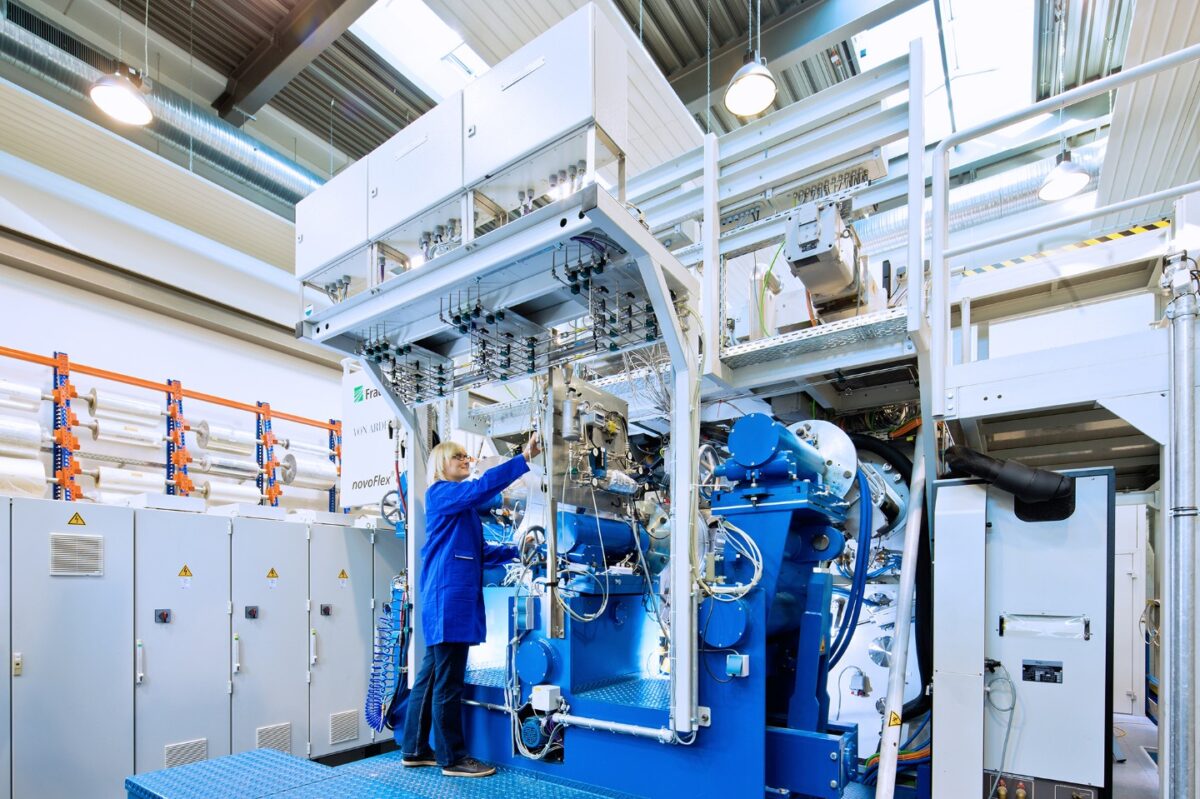Eight industrial and scientific entities in Germany have come together to pursue two key innovations in lithium-ion battery technology: the replacement of metal foils with a metallized fabric structure, and the use of silicon as anode material.

The novoflex 600 roll-to-roll pilot strip coater, , on which the new process for the deposition of columnar silicon layers will be done.
Image: Fraunhofer FEP, Fotograf: Jürgen Lösel
The new revoLect research project has brought together eight industrial and scientific entities in Germany to create new types of electrodes for lithium-ion batteries (LiB), with significantly better energy density.
One part of the project focuses on novel electrodes with lightweight fabric-based current collectors for LiBs using a resource-saving technology. This technology requires less use of primary raw materials such as copper and aluminum, while simultaneously enabling higher energy densities, which translates into further material savings from the cell to the system level. Another development focuses on the use of pure silicon as anode material in combination with the lightweight fabric structure of the electrodes.
The project is funded by the German Federal Ministry for Economic Affairs and Climate Action and the work is divided into corresponding subprojects which will be run by individual partners over the next three years.
Porcher Industries Germany GmbH is developing ultralight glass fabrics as the basis for electricity collectors. In parallel, the Dresden University of Technology, Institute of Textile Machinery and High Performance Material Technology (ITM), is developing ultralight carbon fabrics based on a carbon-spreading technology.
In the next step, the developed carbon and glass fabrics are metallized by elfolion GmbH by vacuum processes for use as current collectors. elfolion's focus is on the development of the cathode, consisting of fractal porous solid structures, which are the active component of the electrode. The open-mesh and lightweight structure of the fabrics and the porous coating result in significantly reduced material usage and larger active surfaces, which in turn significantly increases the energy density of battery cells in terms of both mass and volume.
The RWTH Aachen University, Chair of Production Engineering of E-Mobility Components (PEM), is developing processes for coating the fabric-based current collectors with slurry-based electrode materials. In addition, it is investigating the design and production of the battery cells based on the components provided by the project partners.
Fraunhofer FEP's goal in the revoLect project is to develop a process for depositing silicon on the fabric structures.
“We have to match the silicon layer and the fabric structures in such a way that an optimum is achieved with regard to the gravimetric energy density of the anode,” said Claus Luber, a scientist at Fraunhofer FEP.
One of the research partners, Customcells, coats the novel substrates with electrode paste under industry-standard conditions. Subsequently, the performance of the batteries is tested by electrochemical measurements.
The Institute for Experimental Physics at the Technical University of Freiberg is involved in the characterization of the processed individual components and button and pouch cells. From this, microstructure-property correlations as well as design proposals and processing parameters will be derived for the cooperation partners.
Romonta GmbH interconnects the manufactured cells to battery systems and carries out final practice-related application tests. In the evaluation, cell parameters such as aging and current/voltage resistance are to be analyzed and transferred to the mobile application. This is expected to ensure the powerful performance of the LiB.